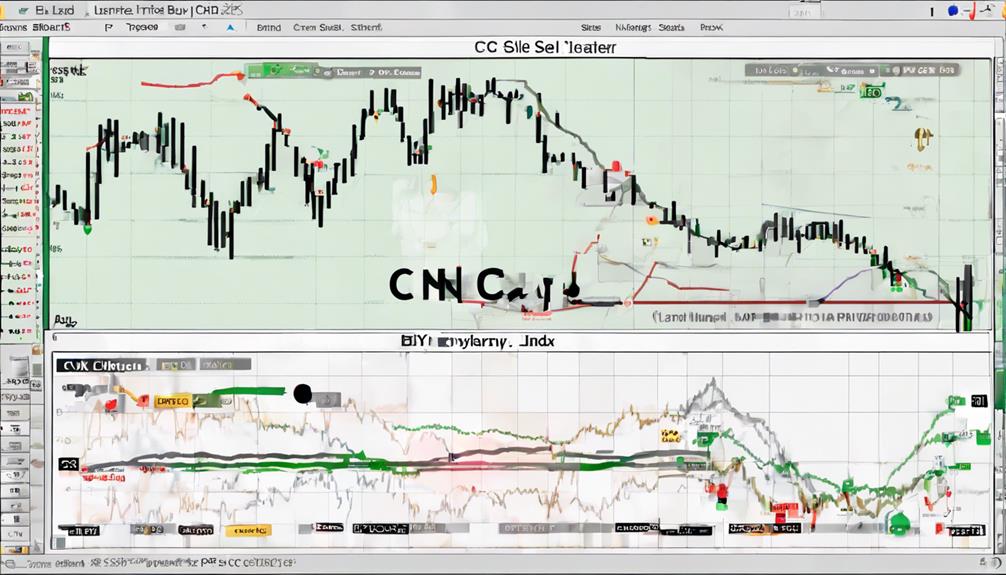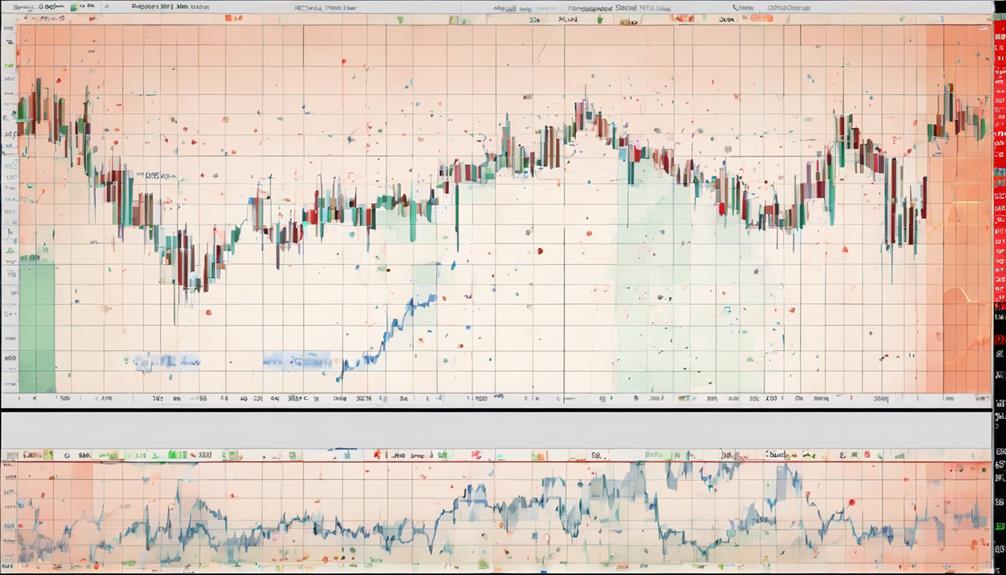The Commodity Channel Index (CCI) has long been a staple in the toolbox of technical analysts seeking to gain insights into market trends. As a versatile indicator, the CCI offers traders a nuanced understanding of price dynamics, from identifying potential turning points to gauging momentum shifts.
By exploring how this tool functions within the realm of market analysis, one can uncover valuable strategies for anticipating future price movements and enhancing trading precision. This discussion opens the door to a deeper exploration of how the CCI can serve as a strategic ally in navigating complex market landscapes and making informed trading decisions.
Understanding Commodity Channel Index (CCI)
Indisputably, the Commodity Channel Index (CCI), developed by Donald Lambert in 1980, stands as a pivotal tool for measuring stock price relative to its historical average over a specific period. The CCI calculates price deviation by considering the difference between the typical price and the moving average, normalized by a factor that includes the mean deviation. This calculation results in a value that typically falls within the -100 to +100 range.
Traders utilize the CCI to identify potential overbought and oversold conditions in assets, which can be indicative of upcoming trend reversals. Positive CCI values often suggest uptrends, while negative values may signal downtrends. Moreover, zero line crossovers in the CCI can indicate potential trend reversals.
The CCI provides traders with crucial buy/sell signals based on these line crossovers and trend confirmations, making it an indispensable tool for technical trading strategies. Understanding these aspects of the CCI is fundamental for effectively predicting market trends and making informed trading decisions.
Working Mechanism of CCI

The effective functioning of the Commodity Channel Index (CCI) hinges on its ability to quantify price deviation through a comparison between the current price and a moving average, providing insights into potential overbought or oversold market conditions.
Working Mechanism of CCI:
- Quantifying Price Deviation: CCI calculates price deviation by comparing the current price to a Simple Moving Average, allowing traders to assess potential market conditions.
- Determining Overbought and Oversold Levels: CCI values above +100 indicate overbought levels, signaling a possible reversal, while values below -100 suggest oversold conditions, indicating potential buying opportunities.
- Utilizing Mean Deviation and Constant Multiplier: The calculation involves mean deviation and a constant multiplier, resulting in CCI values that help traders make informed decisions.
- Assessing Market Momentum: Sensitivity to period length, volatility, and security trend influences the effectiveness of CCI in identifying market momentum, aiding traders in generating buy/sell signals.
Calculating CCI for Market Analysis

Calculation of the Commodity Channel Index (CCI) for market analysis involves a precise mathematical formula that evaluates price deviations based on the relationship between the current price and a moving average. This calculation includes subtracting the moving average from the typical price and dividing it by 0.015 times the mean deviation.
The CCI values usually range between -100 and +100, providing insights into overbought conditions when above +100 and oversold conditions when below -100. By considering the relationship between current prices and historical averages, CCI assists traders in assessing market conditions.
The sensitivity of CCI values to factors like period length, volatility, and security trend influences its effectiveness in predicting market trends. Therefore, traders can leverage CCI calculations to interpret price movements, identify potential market turning points, and make informed trading decisions based on the analysis of price deviations in relation to historical averages.
Leveraging CCI for Trend Prediction

When leveraging the Commodity Channel Index (CCI) for trend prediction, traders can effectively identify potential market trends by analyzing overbought and oversold conditions in trading instruments.
Here are key ways traders can utilize CCI for trend prediction:
- Identifying Overbought and Oversold Conditions: CCI values above +100 or below -100 can suggest potential trend reversals, signaling buying or selling opportunities.
- Zero Line Crossovers: Monitoring zero line crossovers can help anticipate changes in market direction, providing insights into possible trend shifts.
- Divergence Signals: Recognizing divergence signals between price movements and CCI trends can offer valuable indications of potential trend changes.
- Price Action Patterns: Combining CCI analysis with price action patterns enhances trend prediction accuracy, aiding traders in making well-informed decisions based on market trends.
Enhancing Trading Strategy With CCI

Enhancing trading strategies with the Commodity Channel Index (CCI) involves integrating this powerful indicator with various technical tools to optimize decision-making processes and improve trading outcomes. By combining CCI with indicators such as moving averages, traders can enhance trading signals and validate trend reversals effectively.
Adjusting CCI thresholds according to a security's volatility levels can refine overbought and oversold signals, leading to more accurate entry and exit points. Incorporating CCI within a price channel framework can further improve precision in trade timing.
Additionally, utilizing CCI alongside pivot points aids in identifying crucial support and resistance levels critical for decision-making. Effective risk management strategies with CCI entail implementing stop-loss orders based on CCI signals to safeguard profits and mitigate losses.
Integrating CCI with these technical tools and risk management practices can significantly enhance a trader's overall strategy and performance in the market.
How Can I Use the Commodity Channel Index to Predict Market Trends?
The role of Commodity Channel Index is to help traders identify potential market trends and reversals. By analyzing the CCI indicator, traders can determine overbought and oversold conditions, as well as possible trend changes. Utilizing the CCI can aid in making informed decisions and predicting market movements.
Frequently Asked Questions
What Is the CCI Trend Strategy?
The CCI trend strategy involves utilizing the Commodity Channel Index to identify potential market trends and reversals. Traders analyze CCI values crossing above or below the zero line for trend signals, often confirming trends with moving averages or trendlines.
What Does CCI Indicator Tell You?
The CCI indicator informs traders about overbought or oversold market conditions, indicating potential trend reversals. With values above +100 signaling overbought and below -100 suggesting oversold, incorporating CCI signals enhances decision-making, providing valuable insights for trading strategies.
What Is the CCI Channel Strategy?
The CCI Channel Strategy involves utilizing the Commodity Channel Index (CCI) to pinpoint market overbought and oversold levels. It centers on identifying extreme CCI values above +100 for overbought signals and below -100 for oversold indications, aiding traders in potential trend reversal predictions.
What Is the Best Setting for the Commodity Channel Index?
Optimal Commodity Channel Index (CCI) settings vary based on the trader's preferences and market conditions. While a period length of 14 is commonly used, adjusting it can impact signal sensitivity. Experimentation helps find the ideal setting.
Conclusion
In conclusion, the Commodity Channel Index (CCI) serves as a powerful tool for predicting market trends and making informed trading decisions.
By accurately assessing overbought and oversold conditions, identifying potential trend reversals, and capturing price movements, the CCI enhances trading strategies and increases the likelihood of success in the market.
Embrace the CCI to unlock the key to lucrative opportunities and stay ahead of the curve in your trading endeavors.
